

Living with chronic pain in recovery can feel like a minefield, especially if the pain is relatively new and you've experienced it while sober. While many people become addicted to drugs after being exposed medically, others may need pain relief while sober. Taking opioids for more than a day or two is not safe for people in recovery. Yet longer-term pain may remain; it's not something that improves as you stay sober longer. People with chronic illnesses need solutions that help them stay sober and improve their quality of life.
Chronic pain typically can come from various conditions, from nerve damage from long-term drug use to pain from injuries, accidents, and illnesses that didn't heal. Many people in recovery live with chronic diseases. Sometimes that means they live with chronic pain, too.
When left untreated, chronic illness can significantly impact the quality of life of an individual. In the past, opioids, such as morphine and oxycodone, were considered the go-to treatment for severe pain. Today, many doctors are better educated and choose a multi-pronged approach to minimize harm.
Here are some potential options:
Buprenorphine, while also used in Medication-Assisted Treatment, is a medication that can help with pain management in a few different ways. First, it is a partial opioid agonist, meaning it can produce some pain-relieving effects as other opioids but with a lower risk of addiction and fewer side effects.
Buprenorphine also has a ceiling effect, meaning it cannot produce any additional pain relief after a specific dose, making it safer to use than other opioids. Buprenorphine works as an antagonist at receptor sites in the brain, which means it can block other opioids from binding and therefore reduce the risk of overdose.
Buprenorphine has been shown to positively affect mood, making it helpful to people who live with chronic pain and struggle with depression. A qualified healthcare provider should only prescribe buprenorphine, and patients should follow their provider's treatment plan carefully. Not every health plan will offer it, and you may not qualify for it. Speak with your healthcare providers to learn more.
In pain management, low-dose naltrexone (LDN) has been studied as a potential therapy for conditions such as fibromyalgia, neuropathic pain, and chronic fatigue syndrome. It is thought to work by modulating the immune system and reducing inflammation, which may contribute to chronic pain.
Naltrexone is no longer considered experimental. However, not all health insurance companies will cover it, and not all treatment centers offer it. Naltrexone used for chronic pain rather than opioid use disorder is considered off-label and may not covered by health insurance.
In addition to medication-based treatment, integrative approaches like physical therapy, cognitive-behavioral therapy, and mindfulness-based interventions can help reduce chronic pain without relying on opioids.
People with chronic pain or no pain can become addicted to opioids. If you live with opioid use disorder, and need treatment for chronic pain, work closely with your doctor to try non-addictive treatment options.
Contingency management, a type of behavioral therapy, is an unusual but highly effective treatment for people who live with substance use disorder. In programs that use contingency management, people who participate agree to stay sober. They receive positive reinforcement when they do so successfully and meet specific goals the program sets. Typically, this type of reinforcement is in the form of monetary compensation, gift cards, or even prizes. Sometimes these programs will also do the same for awarding privileges within a treatment facility. (Usually, all participants are regularly drug-tested to ensure compliance and honesty.)
Contingency management is often a good fit for people who experience multiple challenges. Substance use disorder does not discriminate, and many people who live with dual diagnoses find motivation within programs using this model.
People addicted to multiple substances may find contingency management helps them become more committed to their treatment plans. Contingency management helps people stay sober and comply with treatment plans. In California, people addicted to methamphetamine successfully completed treatment programs that used contingency management.
Contingency management is also used in therapy for people with mental health disorders who want to work on their goals.
People who participate in the therapy may be rewarded for taking specific actions which help them begin and maintain their recovery. People may earn rewards for good attendance, adhering to their medications, staying sober, attending 12-step meetings, and other aspects of their treatment.
For most people in outpatient treatment, many actions may need to be taken. People who are on probation, for example, may also be rewarded for working towards other goals such as applying for jobs or going back to school. They may need to balance going to therapy and twelve-step meetings as well as work.
The treatment helps people stick to a vital routine focused on recovery. Motivation and rewards can help people stay centered in recovery and feel good about themselves.
Sober living homes often combine both recovery and independence. People living in these homes share the same goals and can work toward being responsible and sober together. There are both community responsibilities as well as opportunities to bond and grow. Learn more about our peaceful, sober-focused communities by calling us at 760-216-2077.
